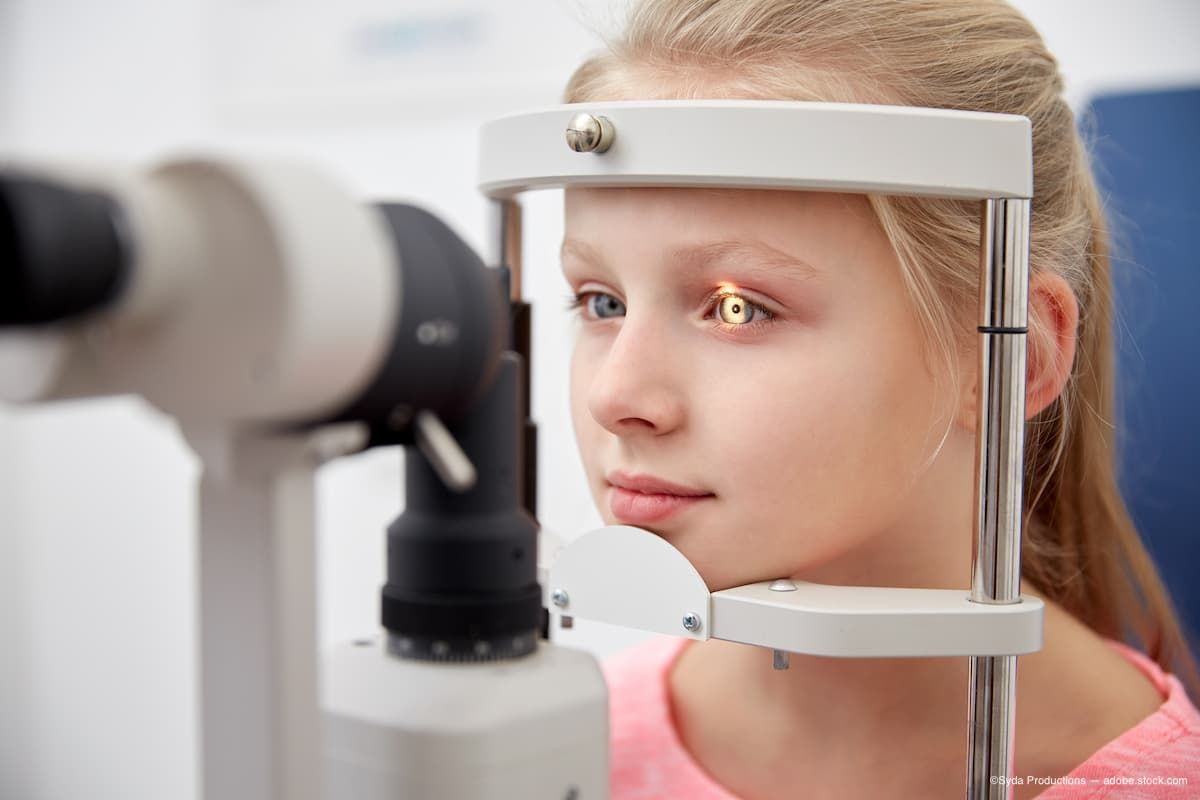News
Article
Study: Few children – especially those with safety-net insurance – get vision checked at checkups
Author(s):
According to researchers from University of Michigan and Duke University, children with Medicaid or other public insurance are far less likely than those with private insurance to have had a vision check in the last year at a primary care office.
(Image Credit: AdobeStock/Syda Productions)

A new study has found that less than a third of children have received a vision checkup in the past year at their regular primary care clinic.
The study also found rates of eyesight screening in kids vary widely by insurance status, the study shows, with the lowest rates among uninsured children (18%) and those with “safety net” public insurance for people with low incomes (28%).
But even children with private insurance, such as from a parent’s job, had only slightly higher rates of screening, at 34% in the past year, according to the study1 in JAMA Ophthalmology by researchers from the University of Michigan and Duke University. According to Michigan Medicine – University of Michigan news release, the study was funded by the U-M NCSP and by a grant from Research to Prevent Blindness.
According to the news release, screening rates are highest, but still low, in children between the ages of 3 and 5, the study shows. They’re part of the age group covered by a national universal vision screening guideline, due to the importance of detecting amblyopia, or “lazy eye”, early and treating it.
The researchers noted in the news release that of the children in this age group who have private insurance, just over 41% had their vision screened at their regular primary care clinic or pediatrician’s office in the last year, the study finds. That’s compared with about 35% of those with public insurance and 30% of those with no insurance.1
Among elementary school-aged children, screening rates were 5 percentage points below the rates for preschoolers across the board. And only 25% of privately insured middle-school and high-school-aged children, and 20% of their publicly insured and 17% of their uninsured peers, had their vision checked recently by their regular health clinic.1
Moreover, according to the news release, the study examined data from nationally representative surveys of parents conducted by the federally funded National Survey of Children’s Health from 2018 to 2020.
The researchers noted that parents were asked if their children had had a check of their ability to see letters, pictures or shapes on a standard eye chart during the past year at their pediatrician’s office or regular doctor’s office.
Olivia Killeen, MD, MS, who performed the study while she was a National Clinician Scholar at the University of Michigan Institute for Healthcare Policy and Innovation and Kellogg Eye Center, highlighted the importance of vision screening.
“Well-child visits, and other annual checkups such as school or camp physicals, are critical opportunities for catching eye-related issues in children that can have lasting consequences for their education and lives, and these data clearly show room for improvement,” she said in the news release.
Killeen is now a clinical fellow in pediatric ophthalmology at Duke Health.
The researchers noted that one driver to the disparity by insurance status is a disparity in primary care visits focused on prevention and early detection. Only 46% of uninsured children had had a preventive health care visit with their regular provider in the last year, compared with 81% of privately insured children and 73% of publicly insured children.
Children with special health care needs – who may be eligible for full or partial health insurance coverage under the Children’s Health Insurance Program or CHIP even if their parents or guardians make too much money to qualify for Medicaid – had very low rates of vision screening. Only 28% of those with public insurance, 19% of those with private insurance, and 12% of those who are uninsured had their vision checked in the past year.
In addition to Killeen, the study’s authors include senior author Joshua Ehrlich, MD, MPH, an assistant professor in the Department of Ophthalmology and Visual Sciences at Michigan Medicine, research assistant professor at the U-M Institute for Social Research and IHPI member. Other authors are IHPI member and U-M Internal Medicine researcher HwaJung Choi, PhD; Niharica S. Kannan, a U-M undergraduate student; and two from the University of Utah, Afua O. Asare, OD, PhD, and Brian C. Stagg, MD, MS, who is also a U-M NCSP alum.
Reference:
Killeen OJ, Choi H, Kannan NS, Asare AO, Stagg BC, Ehrlich JR. Association Between Health Insurance and Primary Care Vision Testing Among Children and Adolescents. JAMA Ophthalmol. Published online August 17, 2023. doi:10.1001/jamaophthalmol.2023.3644
Newsletter
Don’t miss out—get Ophthalmology Times updates on the latest clinical advancements and expert interviews, straight to your inbox.





